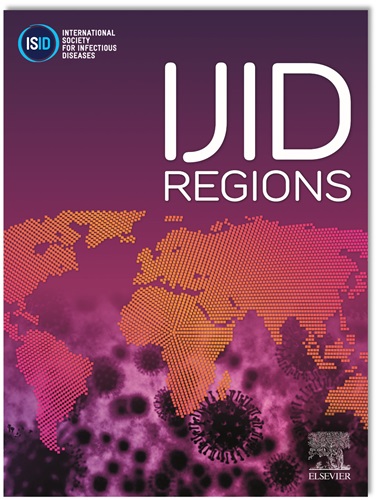Persistence of the neutralizing antibody response one year after a single injection of a new Yellow fever vaccine in adults
IF 4.8
2区 医学
Q1 INFECTIOUS DISEASES
引用次数: 0
Abstract
Introduction
Yellow fever (YF) remains a major global health threat, complicated by climate change, vector expansion, and insufficient health system infrastructure in endemic regions. Recent shortages of licensed vaccines during regional outbreaks underscore the need for next-generation YF vaccines that retain safety and effectiveness standards while enhancing manufacturing efficiency. Grown in serum-free Vero cells, vYF is a live-attenuated YF vaccine developed to ensure a sustainable and robust global supply.
Methods
In two ongoing Phase II randomized, observer-blind, active-controlled, non-inferiority multicenter clinical trials of vYF in 18-60-year-old adults in the US (vs. YF-VAX – VYF02 study) or in Europe and Asia (vs. Stamaril – VYF03 study), the neutralizing antibody (NAb) responses are being measured by a YF microneutralization assay on day 29 (D29), month 6 (M6), and then annually from year 1 (Y1) until Y5. Seroprotection is defined as NAb titers ≥ 10 (1/dil). Interim analyses conducted one-month post-vaccination demonstrated that the vYF immune response was non-inferior to YF-VAX or Stamaril. Here, we report the immunogenicity up to Y1.
Adults were randomized 2:1 to receive one dose of vYF or YF active control: 568 in the US (VYF02) and 690 in Europe and Asia (VYF03).
Results
Twenty-eight days after a vYF dose administration, over 99% of YF-naive participants in the US, and over 98% in the EU and over 95% in Asia were seroprotected.
YF-naive recipients (FAS) exhibited D29 post-vaccination geometric mean titers (GMT) well above the seroprotective threshold: 2654, 1/dil, in the US; 2508, 1/dil, in EU; 1374, 1/dil, in Asia. As expected, GMTs waned after D29 but more than 97% of participants in the US, over 98% in Europe and more than 94% in Asia maintained titers above the threshold of protection at Y1, with GMTs of 401, 1/dil, in the US; 469, 1/dil, in EU; and 205, 1/dil, in Asia.
Discussion
Overall, 94% or more of YF-naive adults in US, EU and Asia were seroprotected 28 days after receiving vYF and remained seroprotected at Y1. Seroprotection rates and GMT values following administration of the control vaccines (YF-VAX or Stamaril) were in similar ranges at all evaluated timepoints. Despite lower NAb titers observed in Asia from D29, GMT values remain well above the threshold considered for protection in all regions.
Conclusion
Immunogenicity of vYF is non-inferior to YF-VAX and Stamaril, inducing seroprotective NAb responses in 18 to 60-year-old vaccinees to 1-year post-vaccination. Reduced NAb titers in Asia relative to the US and Europe did not diminish rates of seroprotection. These results are encouraging for addressing unmet public health needs during YF outbreaks.
成人注射新型黄热病疫苗一年后中和抗体反应的持续性
本文章由计算机程序翻译,如有差异,请以英文原文为准。
求助全文
约1分钟内获得全文
求助全文
来源期刊
CiteScore
18.90
自引率
2.40%
发文量
1020
审稿时长
30 days
期刊介绍:
International Journal of Infectious Diseases (IJID)
Publisher: International Society for Infectious Diseases
Publication Frequency: Monthly
Type: Peer-reviewed, Open Access
Scope:
Publishes original clinical and laboratory-based research.
Reports clinical trials, reviews, and some case reports.
Focuses on epidemiology, clinical diagnosis, treatment, and control of infectious diseases.
Emphasizes diseases common in under-resourced countries.

 求助内容:
求助内容: 应助结果提醒方式:
应助结果提醒方式:


